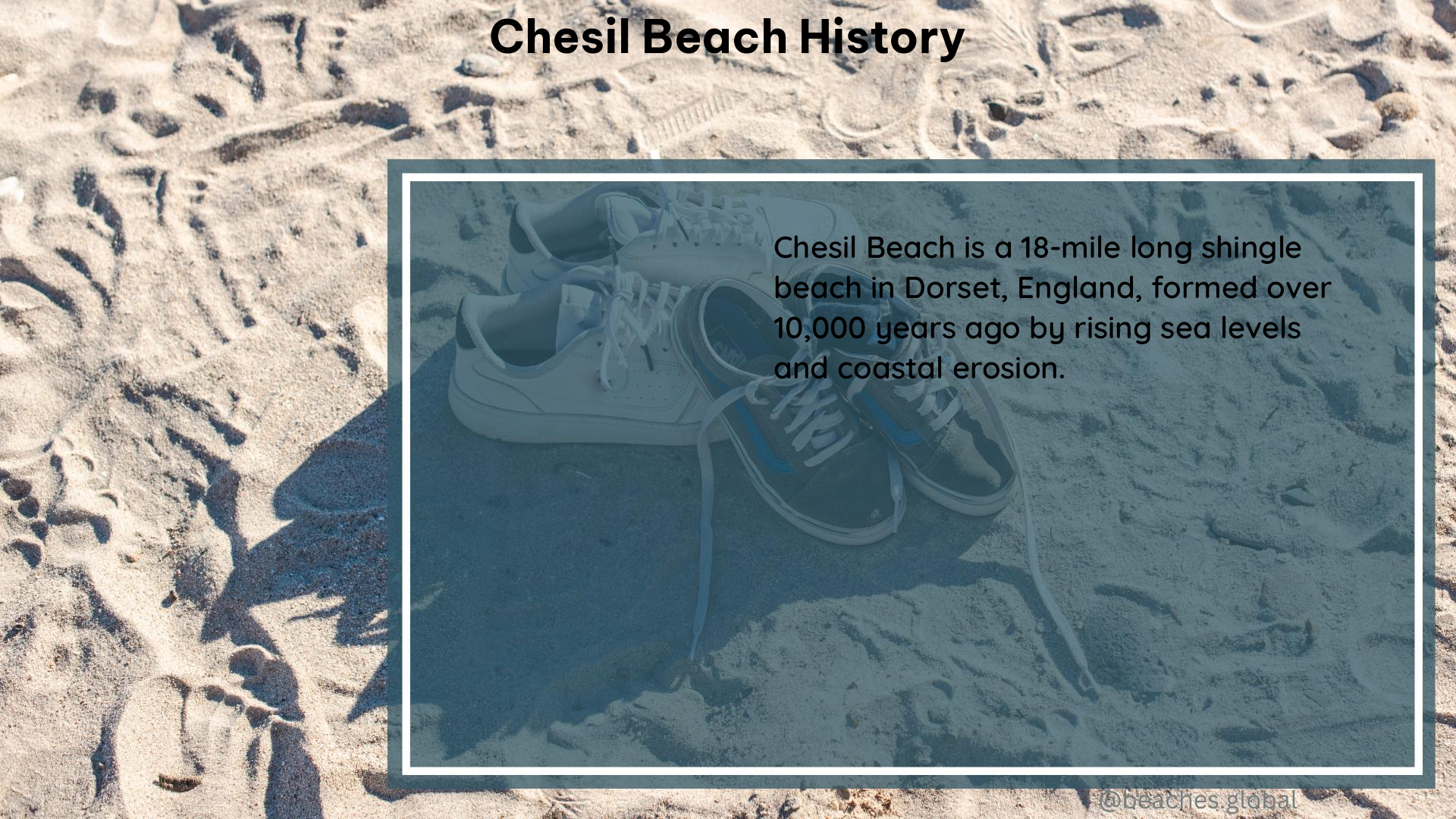Chesil Beach, a remarkable 18-mile-long shingle beach in Dorset, England, has a rich and captivating history that has fascinated visitors and researchers alike. From its geological formation to its role in maritime history, this unique coastal feature has played a significant part in the region’s heritage.
The Geological Formation of Chesil Beach
Chesil Beach is a barrier beach, not a tombolo as previously believed. The beach material is thought to have originated from the Budleigh Salterton pebble beds to the west and later from Portland to the southeast. However, recent research suggests that the feature could also be considered a barrier beach or bar, created due to the Flandrian isostatic sea level rise. The beach connects the mainland to the Isle of Portland, giving the appearance of a tombolo, but it is, in fact, a barrier beach that has “rolled” landwards over time.
Shipwrecks and Maritime History

Chesil Beach has a long and tragic history of shipwrecks, particularly during the age of sail. The beach forms an extended lee shore during south-westerly gales, making it a dangerous location for ships. A strong string of coastguards was once based along the beach, with lookouts and cottages at various locations. Today, the National Coastwatch Institution has taken over the observational role, with lookouts at Burton Bradstock and Charmouth.
| Year | Shipwreck |
|---|---|
| 1824 | The Great Storm of 1824 caused widespread destruction, with many villages along the beach, such as Fleet and Chiswell, being severely damaged or destroyed. |
| 1907 | The SS Formby, a steamship, was wrecked on Chesil Beach, resulting in the loss of 33 lives. |
| 1948 | The SS Serula, a cargo ship, ran aground on Chesil Beach, leading to the loss of 13 crew members. |
The Lerret: A Unique Fishing Boat
The local fishermen have developed a unique boat, the lerret, to withstand the sea actions of Chesil Beach. The double-ended open fishing boat is used for seine net fishing and is usually rowed by four people with a fifth to steer and deploy the net. This specialized vessel has been an integral part of the local fishing culture for generations.
Coastal Defenses and Flood Protection
Over the centuries, the villages of Fleet and Chiswell have battled with the sea and were regularly flooded during rough winter storms. In the great storm of November 1824, the village was struck with disastrous results, leading to the establishment of various defenses, such as the sea wall and promenade, which commenced work in 1958 and were completed in 1965.
Chesil Beach in Popular Culture
Chesil Beach has also made its mark in popular culture. It is referred to as Deadman’s Bay in Thomas Hardy’s novel The Well-Beloved: A Sketch of a Temperament. The beach is not suitable for swimming, surfing, or launching boats, but it is famous for its fishing and unique magnificence.
Chesil Beach’s history is a testament to the power of nature and the resilience of the local communities that have called this remarkable coastal feature home. From its geological formation to its role in maritime history and the development of unique fishing practices, Chesil Beach continues to captivate and inspire all who visit this iconic stretch of the Dorset coastline.
References:
– Wikipedia – Chesil Beach
– Dorset Camper – The Chesil Beach
– Chesil Beach – Formation
